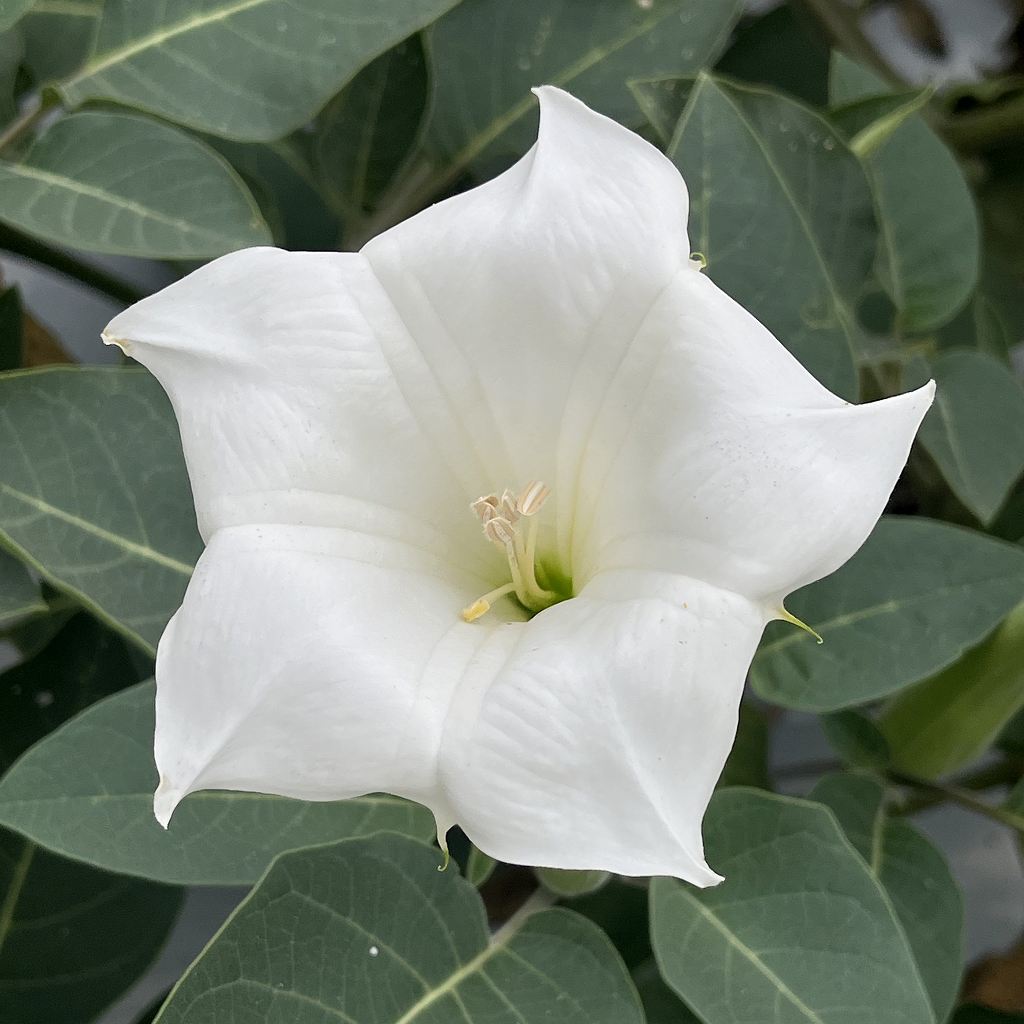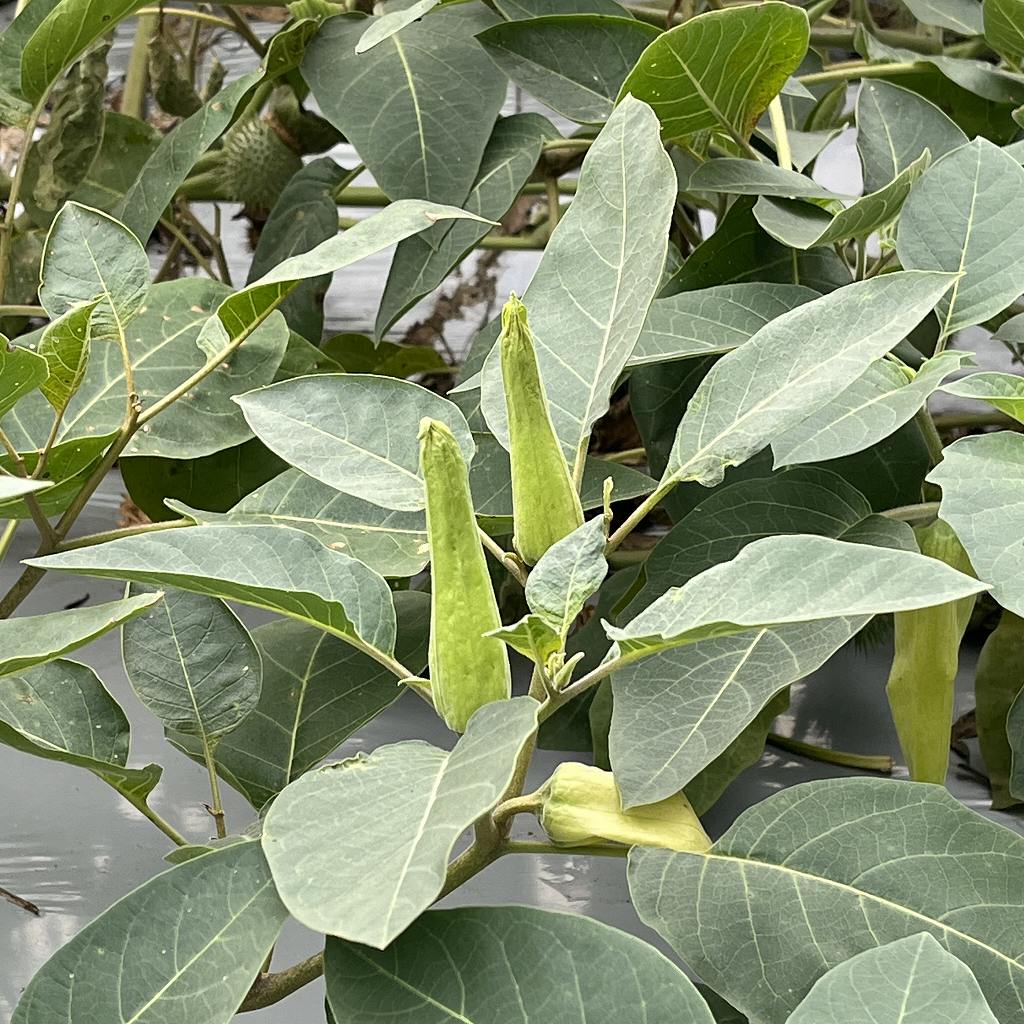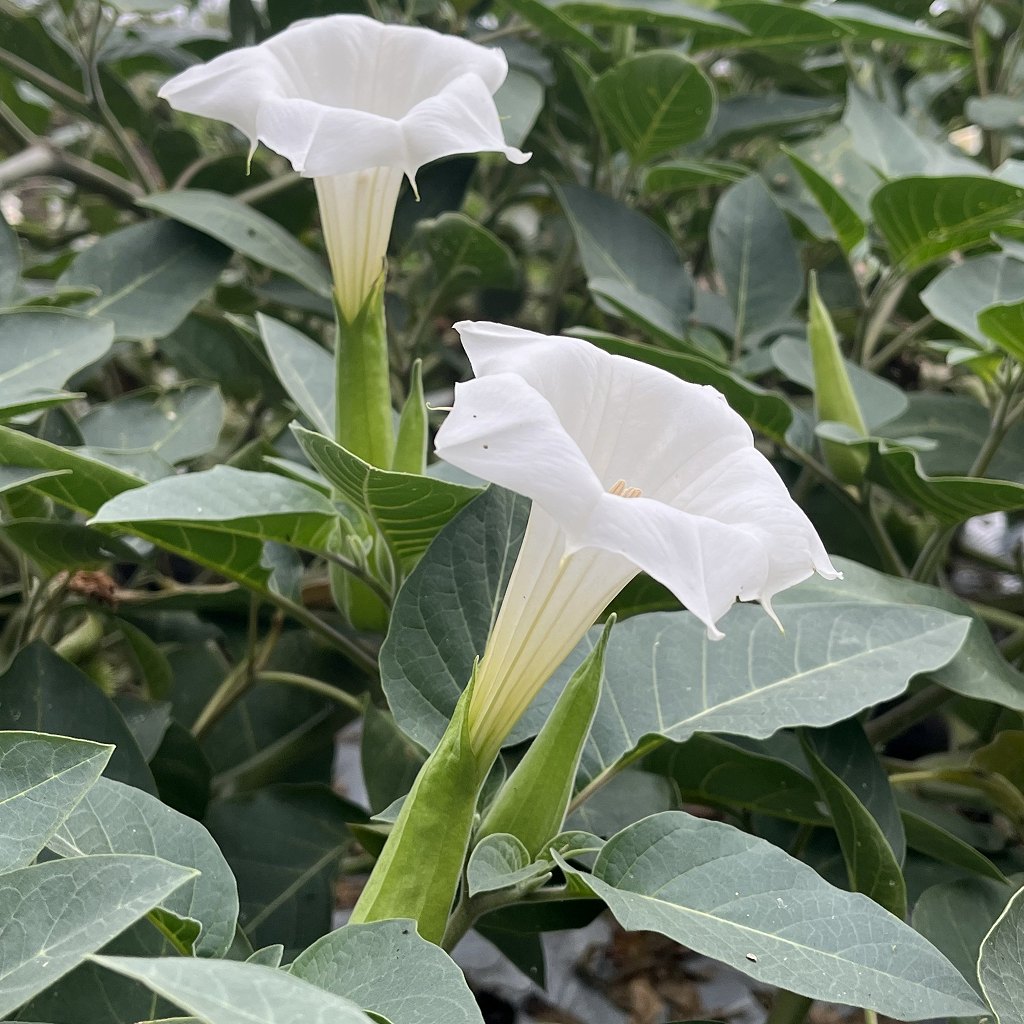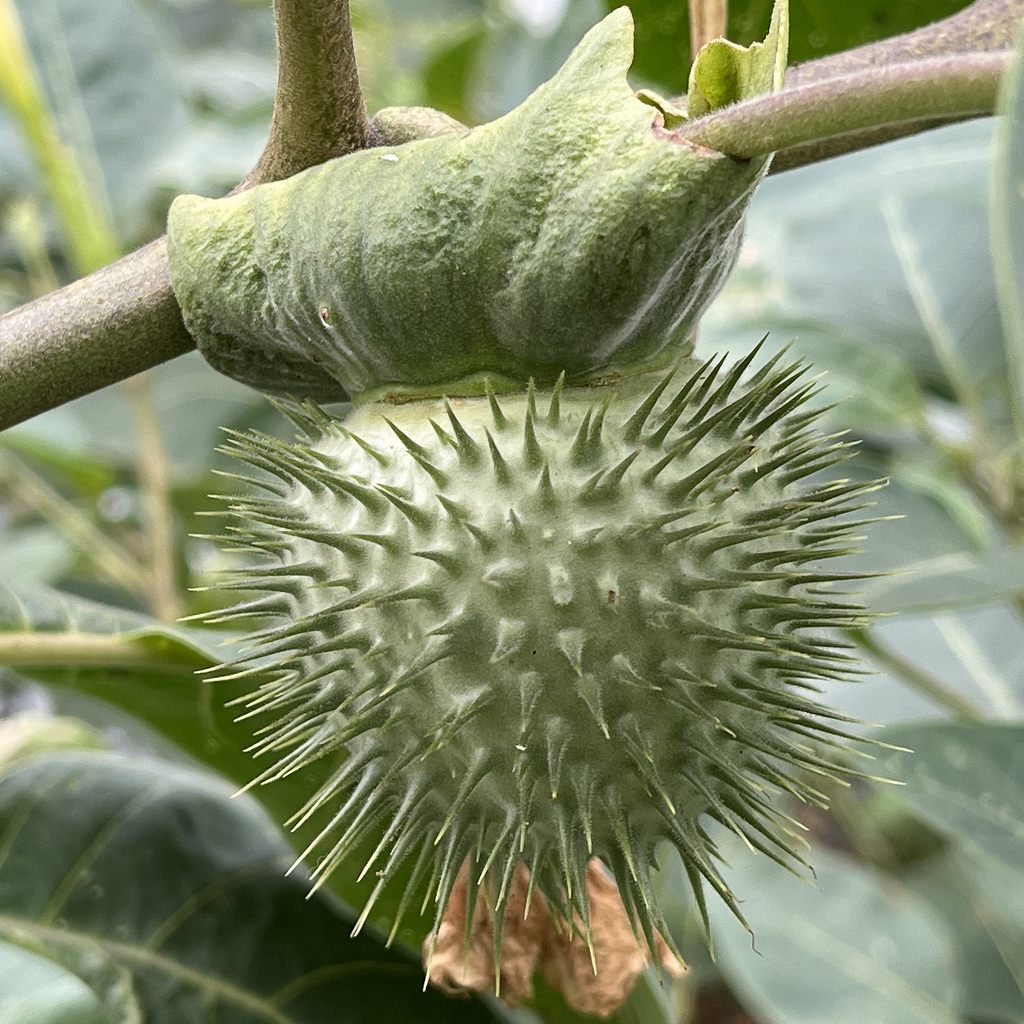ケチョウセンアサガオは、清冽な白色と芳香の花を咲かせる一方、棘だらけの蒴果を結び、全草に強い毒性のあるアルカロイドが含まれます。
Pricklyburr produces bright white and fragrant flowers. However, it produces capsules full of thorns and the whole plant contains highly toxic alkaloids.
【仮名】ケチョウセンアサガオ
【和名】毛朝鮮朝顔
【英名】Pricklyburr, Downy Thorn Apple
【学名】Datura inoxia
【誕生】04/ 12, 08/ 09, 10/ 23
【開花】04, 05, 06, 07, 08, 09, 10月
【花色】White






ケチョウセンアサガオ
ケチョウセンアサガオの概要
ケチョウセンアサガオはナス科の1年~多年草。原産地の中南米から世界各地へと拡がりました。日本では第二次世界大戦後に栽培が始まり、農地周辺や荒れ地などで野生化。朝顔に似ながら清冽な白色と芳香の花を咲かせる一方、棘だらけの蒴果を結び、全草に強い毒性があります。
ケチョウセンアサガオの名前
ケチョウセンアサガオの名前の由来は、姿形が近縁種の「朝鮮朝顔」と同じでありながら、短く軟らかい「毛」で覆われているから。ラテン語の属名ダチュラは古代インドのサンスクリット語で「白い棘のある林檎」という意味です。種小名イノクシアは、なぜか「無害」という意味。
ケチョウセンアサガオの姿形
ケチョウセンアサガオの茎は盛んに分岐し、葉は羽状脈の楕円形で互生。花は咲き始めに上を向いて甘く香り、咲き終わりに下を向いて萎れます。萼筒が細長く、花冠が漏斗状で、縁に突起が5つ、花糸が5本。花後の蒴果は鋭い棘のある球形で、熟すと割れて中の種子を散らします。
ケチョウセンアサガオの近縁
ケチョウセンアサガオの近縁種「朝鮮朝顔」は原産地が不明。日本へは江戸時代に薬用で渡来し、医師の華岡青洲が「鳥兜」や「当帰」などとともに麻酔薬「通仙散」の原料に用いました。「アメリカ朝鮮朝顔」は原産地が北米。花の咲き方が嫋やかで、縁が仄かな青紫色になります。
ケチョウセンアサガオの利用
ケチョウセンアサガオは毒性のあるアルカロイド「アトロピン」「スコポラミン」「ヒヨスチアミン」を含みます。摂取による症状は意識障害、奇行、健忘、高体温、頻脈、瞳孔拡大など。一方、かつて北米のアステカ文明では創傷の鎮痛剤や通過儀礼の幻覚剤などに用いられました。
Pricklyburr
Pricklyburr is an annual and perennial plant of the Solanaceae family. It has spread from its origin in Central and South America to all parts of the world. Cultivation began in Japan after World War II, and it became wild around farmlands and wastelands. It resembles a morning glory, and has bright white and fragrant flowers. However, it produces capsules full of thorns, and the whole plant is highly toxic.
The Japanese name Pricklyburr means “hairy Datura metel”. Its appearance resembles Datura metel, a closely related species. The Latin genus name Datura means “white prickly apple” in ancient Indian Sanskrit. The species name inoxia means “harmless” for some reason.
Pricklyburr’s stems are heavily branched and the leaves are alternate, oval and pinnately veined. At the beginning of blooming, the flowers face upwards and are sweetly fragrant, and at the end of blooming, they point downwards and wither. The calyx tube is elongated and the corolla is funnel-shaped. The corolla has 5 protrusions on the edge and 5 filaments extending. After flowering, the capsule is spherical with sharp spines, and when ripe, it splits and scatters the seeds inside.
The origin of “Datura metel”, a close relative of Pricklyburr, is unknown. It was brought to Japan for medicinal purposes during the Edo period, and the physician Hanaoka Seishu used it as a raw material for anesthetics, along with Aconitum and Angelica acutiloba. “Datura wrightii” is native to North America. The flowers bloom gracefully and have a faint violet edge.
Pricklyburr contains the toxic alkaloids “atropine”, “scopolamine” and “hyoscyamine”. Symptoms of ingestion include impaired consciousness, eccentric behavior, amnesia, hyperthermia, tachycardia, and dilated pupils. On the other hand, in the Aztec civilization of North America, it was once used as a painkiller for wounds and as a hallucinogen for rites of passage.


